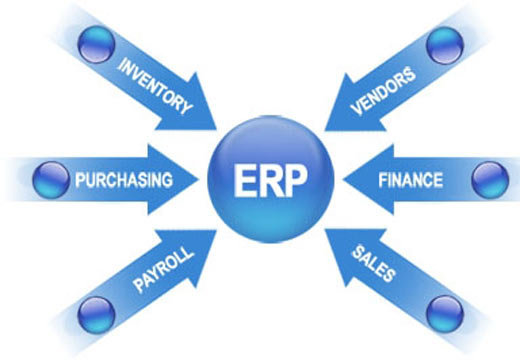What Is BOM Version Control?
BOM version control is the process of managing and tracking changes made to a bill of materials. It is essential for ensuring smooth operations in environments where the BOM is continuously updated.

What is BOM version control?
BOM version control (also called revision control) refers to managing and tracking changes made to the bill of materials or recipe of a product. It ensures that any updates or modifications to materials, quantities, suppliers, or other details are accurately documented, enabling manufacturers to work with the correct and most up-to-date BOM at all times or to easily revert to a previous version.
Key elements of BOM version control
Some critical aspects of BOM version control include:
Tracking changes
Each time a change is made to the BOM, those changes are tracked and recorded. This helps ensure that everyone involved is working with the same, current BOM.
Version history
BOM version control creates a historical record of all changes, including details like who made the changes, when they were made, and why. This can be critical for troubleshooting, auditing, or regulatory compliance.
Approval workflow
Changes to the BOM are often subject to approval workflows. This ensures that any modifications are reviewed and validated before they are implemented in the production process, helping maintain quality control and reduce risks. Access control can be implemented to specify who can view, edit, or approve revisions, ensuring that only authorized employees can make changes to critical documents.
Automatic updates across the system
Version control ensures that changes to a document are reflected across all systems and processes that depend on it. For instance, when a BOM is updated, the new version is instantly reflected in future production or procurement orders, ensuring that any changes to materials or quantities are integrated into the manufacturing flow without manual intervention. This reduces the chances of stock discrepancies or scheduling errors.
Restoration of previous versions
Sometimes changes to a document or design can lead to unforeseen issues. Version control systems allow for the restoration of previous versions, making it possible to revert to an earlier, stable version of a BOM or process if needed. This feature adds a layer of flexibility and ensures that the manufacturing process can quickly recover from errors.
Benefits of BOM version control
There are many advantages BOM version control can offer to manufacturers, including:
Improved accuracy
Version control ensures that all teams are using the correct and most up-to-date version of the BOM. This reduces the risk of errors that could arise from working with outdated information, such as incorrect material specifications or part quantities, which can lead to costly mistakes or delays.
Better collaboration
Multiple teams, such as design, procurement, and production, rely on the BOM. With version control, all stakeholders are guaranteed access to the latest revisions. This ensures everyone is on the same page and working with consistent information, improving overall communication and reducing the chance of miscommunication.
Traceability and auditability
BOM version control provides a complete history of all changes made to the BOM, including who made the changes, when they were made, and why. This audit trail is vital for compliance with industry regulations, quality control processes, and internal review. It also makes it easier to resolve any disputes or errors that arise.
Easier troubleshooting
In case issues arise during manufacturing, version control allows teams to trace the exact changes made to the BOM. If a specific revision caused a problem, teams can quickly identify and address the issue by comparing it to previous versions. This speeds up troubleshooting and problem resolution.
Reduced risk of stock shortages or overstocking
With accurate, up-to-date BOMs, procurement teams can ensure they’re ordering the correct quantities of materials at the right time. Version control ensures that any adjustments made to the BOM (such as material changes or quantities) are automatically reflected across purchase orders and inventory management systems, reducing the likelihood of stock shortages or excess inventory.
Improved compliance
Industries with strict regulatory requirements, such as aerospace or medical devices, require a detailed and traceable record of all product changes. BOM version control ensures that all modifications to the BOM are logged, providing an auditable trail that can be used to demonstrate compliance during inspections or audits.
Faster rollback to previous versions
If an updated BOM version introduces issues, version control allows teams to quickly revert to an earlier, stable version of the BOM. This ability to roll back changes quickly minimizes downtime and prevents production delays, ensuring continuity in manufacturing operations.
Efficient change management
Changes to the BOM often require approval or review from multiple departments. Version control helps manage this process by keeping track of changes, approvals, and notes, and by providing transparency throughout the process. This streamlined change management ensures that no critical steps are overlooked and helps maintain smooth operations.
More accurate planning
Having access to accurate BOM versions ensures that production planning and scheduling are based on the most current data. This improves resource allocation, reduces the risk of production delays due to missing or incorrect materials, and optimizes the overall efficiency of the manufacturing process.
Applications of BOM version control in manufacturing
While BOM version control is absolutely vital for companies that use concurrent engineering, many manufacturing companies might find it helpful. Here are some industries that could benefit the most from it:
1. Automotive. Automotive companies produce complex products with many parts and assemblies that often undergo design revisions and updates.
2. Electronics. Electronics manufacturing often involves frequent changes to components, such as microchips, displays, and connectors.
3. Aerospace and defense. Aerospace and defense industries deal with highly regulated products that undergo numerous revisions due to safety, compliance, and performance improvements.
4. Medical devices. Medical devices are subject to strict regulatory requirements, and any change to the design or materials used in production must be tracked and documented.
5. Industrial machinery. Companies that produce machinery and industrial equipment regularly update their designs for improved efficiency or to integrate new technologies.
6. Food and beverage. Although not as technical as other industries, food and beverage companies also use BOM version control when testing different recipes and updating ingredient lists.
Managing BOMs with an integrated manufacturing ERP
In modern manufacturing ERPs, the bill of materials is one of the cornerstones of a functional system. It serves as a basis for production and material planning, quoting, purchase planning, inventory consumption, and accounting. By integrating all of these areas and ensuring that BOM updates are instantly reflected in the data of every department, manufacturing ERP software such as MRPeasy provides stakeholders with real-time information vital to performing their tasks.
For complex products involving multiple subassemblies or products with variations, a powerful ERP system like MRPeasy provides the tools to manage multi-level BOMs and configurable BOMs as well as their versions effectively.
By centralizing and streamlining access to BOM data, communication between departments becomes faster and more efficient, raising the level of collaboration across the company.
Key takeaways
- BOM version control involves tracking and managing changes to a bill of materials, ensuring that the latest version is always used for production and procurement.
- BOM version control maintains a complete history of changes, which is critical for compliance, quality control, and resolving disputes or issues.
- With version-controlled BOMs, manufacturers can avoid errors like incorrect material specifications, resulting in more accurate production planning and scheduling.
- If a BOM update introduces issues, version control allows for quick restoration to a previous, stable version, minimizing downtime and production delays.
- Detailed records of all BOM changes ensure that manufacturers in regulated industries (e.g., medical, aerospace) can demonstrate compliance during audits or inspections.
Frequently asked questions (FAQ)
BOM version control ensures that every change to a product’s materials or design is documented with a clear audit trail, which is essential for industries like medical devices or aerospace that are subject to strict regulations. It allows manufacturers to demonstrate that they are complying with safety and performance standards during inspections.
With version control, any mistakes can be quickly identified and corrected. The system allows you to revert to previous, stable versions of the BOM, minimizing the impact of errors and ensuring that production continues without significant disruptions.
BOM version control streamlines the manufacturing process by ensuring that the correct materials, quantities, and design specifications are always used. It eliminates the risk of working with outdated or incorrect information, improving resource allocation and reducing the likelihood of production delays.
You may also like: BOM Management Guide for Growing Businesses




